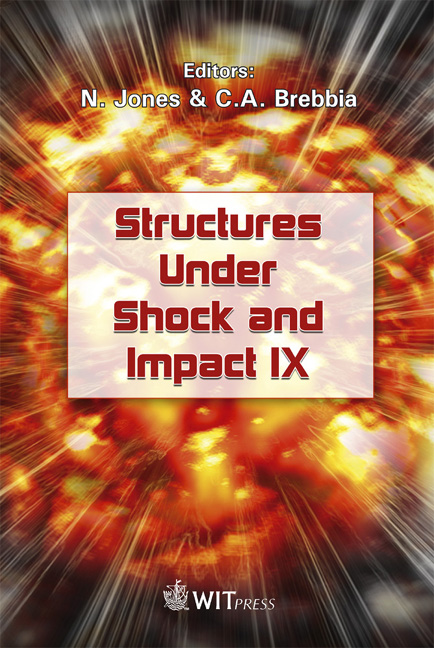Explosion-induced Damage To Oilwell Perforating Gun Carriers
Price
Free (open access)
Transaction
Volume
87
Pages
12
Published
2006
Size
2841 kb
Paper DOI
10.2495/SU060171
Copyright
WIT Press
Author(s)
B. Grove, A. Werner & C. Han
Abstract
We present an overview of damage to oilwell perforating gun carrier tubes. Gun carriers are sealed hollow steel tubes, used to convey multiple small shaped explosive charges down a wellbore to the vicinity of a hydrocarbon reservoir, isolating the charges from the wellbore fluid and pressure. At the prescribed time and location the charges are detonated, producing perforation tunnels into the reservoir and allowing subsequent hydrocarbon flow into the wellbore and uphole to surface facilities. Upon detonation, the charges present three significant and damaging loading mechanisms within the carrier tube: jet perforation, case fragment impact, and explosive blast. The resulting carrier tube has several holes and bulges, but is otherwise intact; it is then either retrieved to surface or dropped into the rathole. It is generally desired that a gun carrier tube survives the perforation event without excessive swelling, cracking, or catastrophic rupturing (i.e. splitting). Gun survivability is, in fact, a major consideration in perforating system design and manufacture. Achieving reliable survivability requires an understanding of the loading regime and damage mechanisms involved, and the requisite material properties and geometric characteristics. This event bridges hypervelocity impact, blast loading, shock physics, and material science disciplines, as well as rigorous manufacturing process control. In this paper, we address some of these salient issues in general, and present experimental, analytical, and numerical investigations into perforating gun damage. Subsequent papers will explore the constituent facets in greater detail. Keywords: perforating, gun damage, oilwell, gun splitting, fragment impact. www.witpress.com, ISSN 1743-3509 (on-line) Explosion-induced damage to oilwell perforating gun carriers B. Grove, A. Werner & C. Han Abstract We present an overview of damage to oilwell perforating gun carrier tubes. Gun carriers are sealed hollow steel tubes, used to convey multiple small shaped explosive charges down a wellbore to the vicinity of a hydrocarbon reservoir, isolating the charges from the wellbore fluid and pressure. At the prescribed time and location the charges are detonated, producing perforation tunnels into the reservoir and allowing subsequent hydrocarbon flow into the wellbore and uphole to surface facilities. Upon detonation, the charges present three significant and damaging loading mechanisms within the carrier tube: jet perforation, case fragment impact, and explosive blast. The resulting carrier tube has several holes and bulges, but is otherwise intact; it is then either retrieved to surface or dropped into the rathole. It is generally desired that a gun carrier tube survives the perforation event without excessive swelling, cracking, or catastrophic rupturing (i.e. splitting). Gun survivability is, in fact, a major consideration in perforating system design and manufacture. Achieving reliable survivability requires an understanding of the loading regime and damage mechanisms involved, and the requisite material properties and geometric characteristics. This event bridges hypervelocity impact, blast loading, shock physics, and material science disciplines, as well as rigorous manufacturing process control. In this paper, we address some of these salient issues in general, and present experimental, analytical, and numerical investigations into perforating gun damage. Subsequent papers will explore the constituent facets in greater detail. Keywords: perforating, gun damage, oilwell, gun splitting, fragment impact.
Keywords
perforating, gun damage, oilwell, gun splitting, fragment impact.





